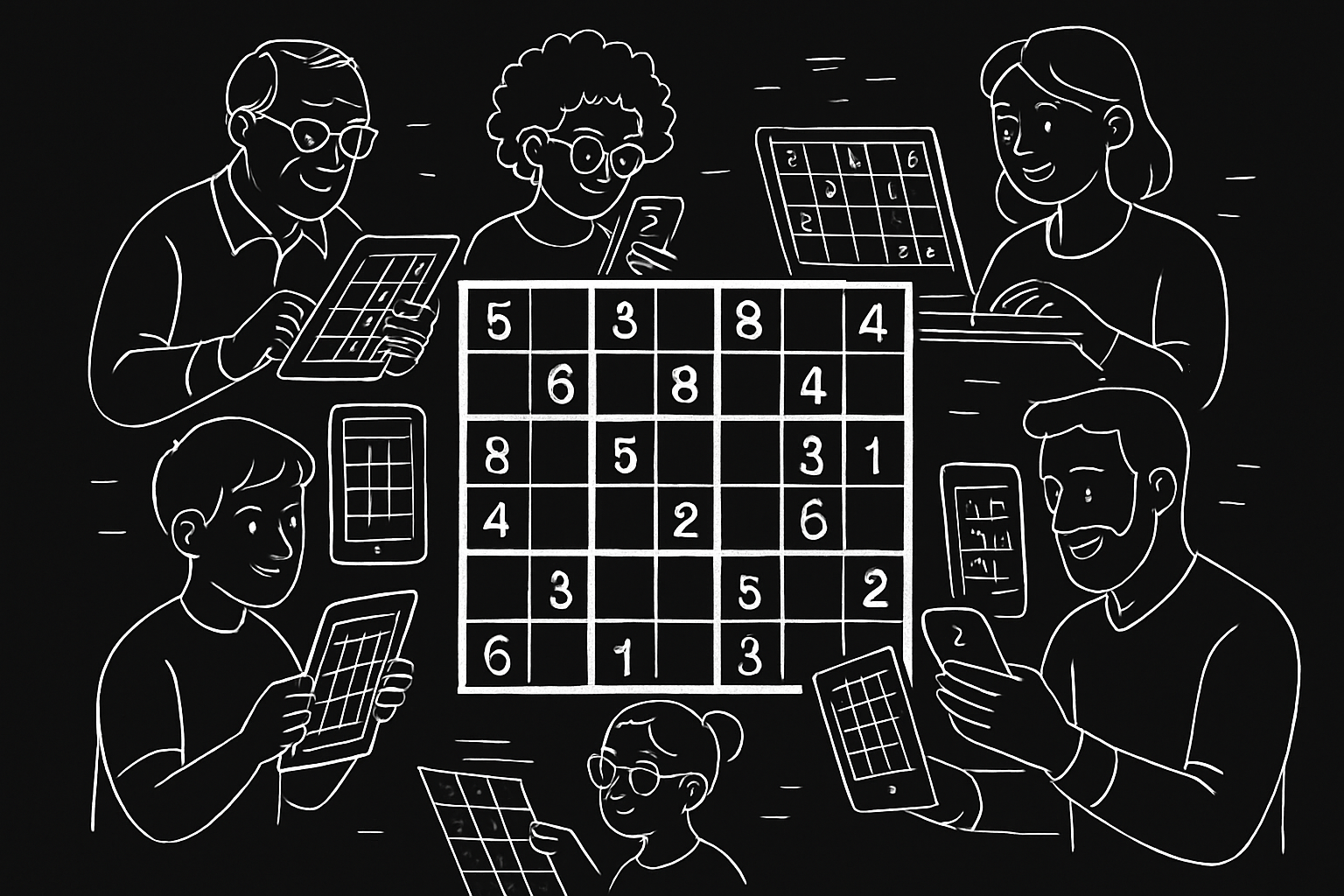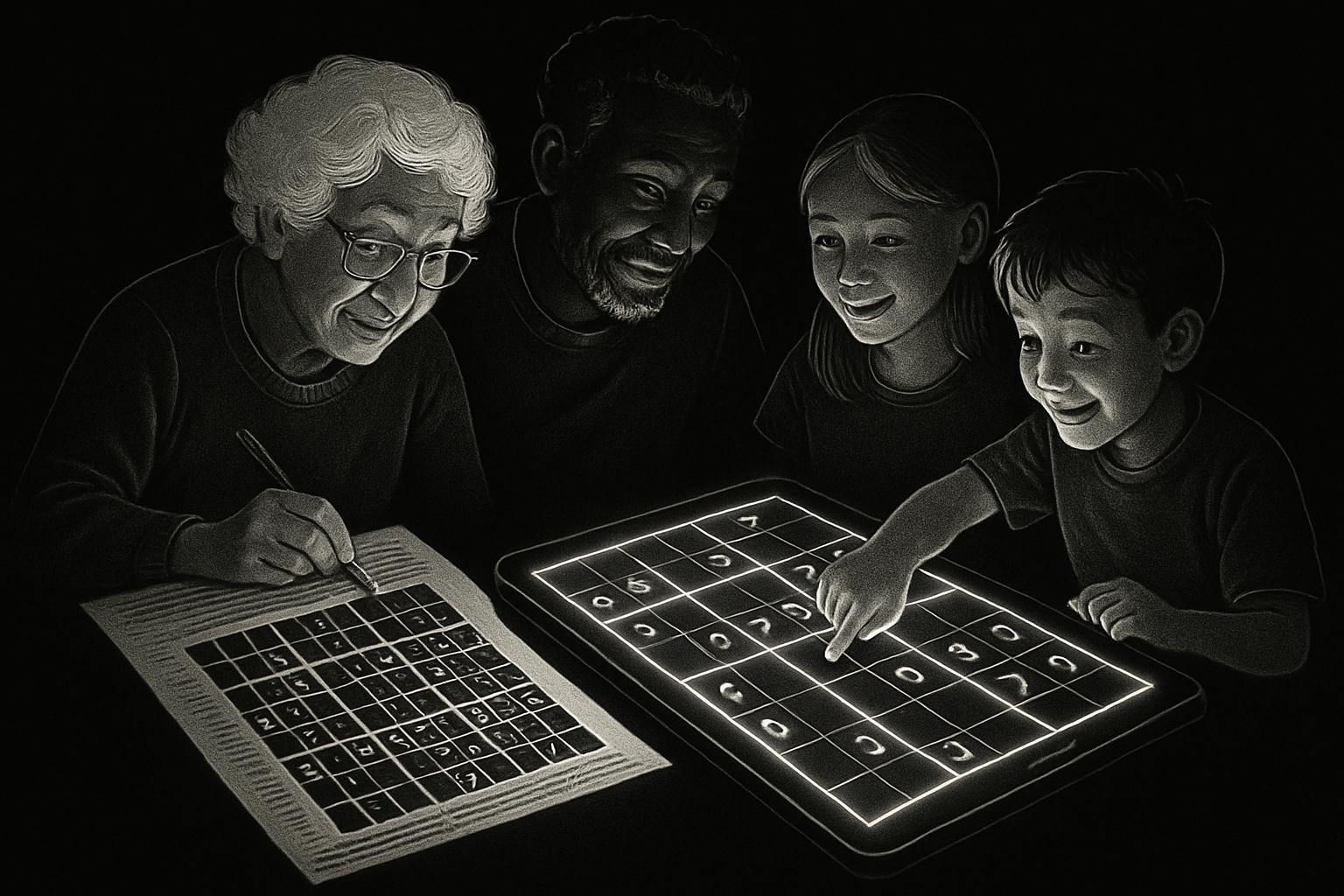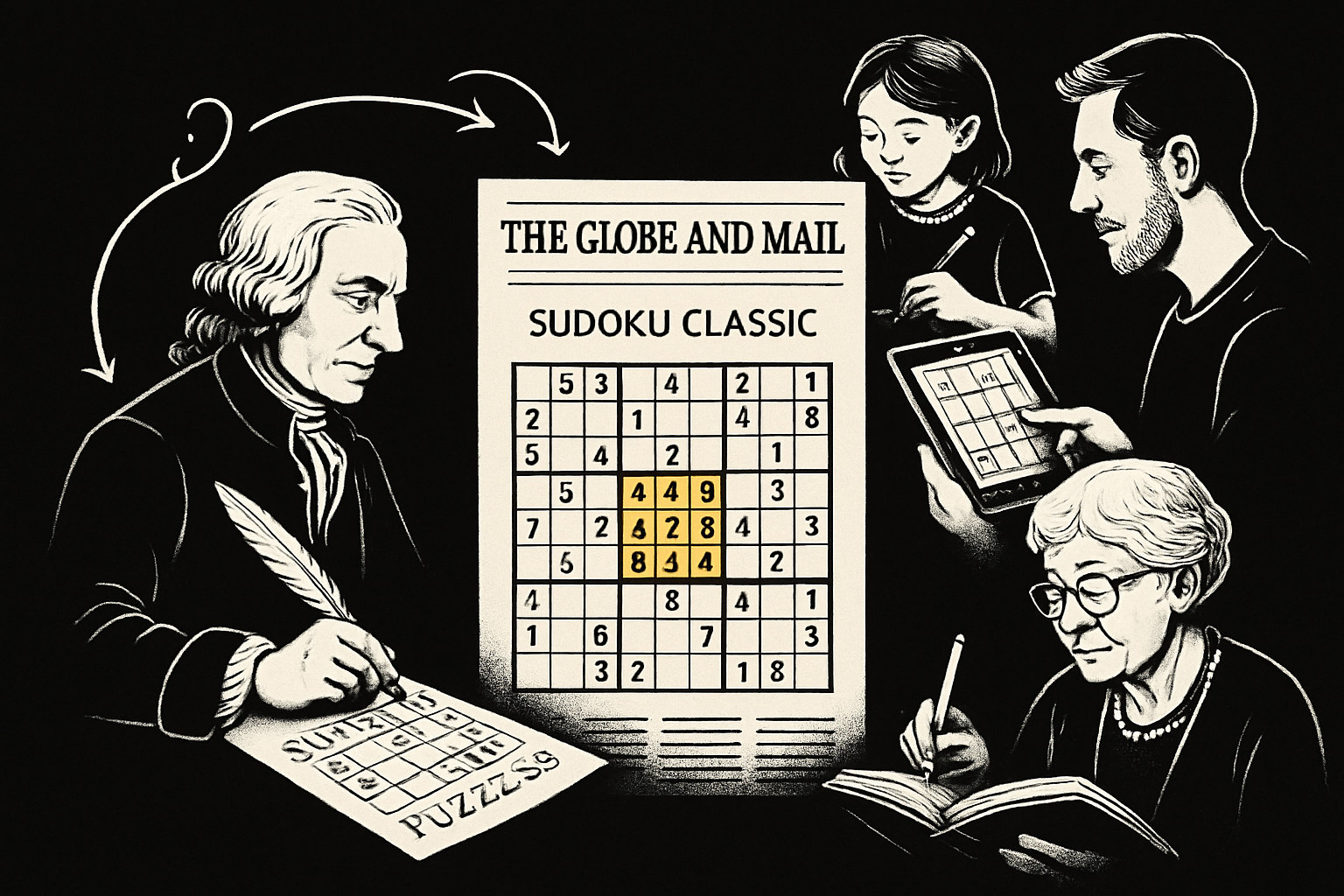Ever wondered what it takes to truly master the challenge of a ny times sudoku medium puzzle? These puzzles have captured the attention of thousands, offering both a mental workout and the thrill of a satisfying solve.
If you’re new to ny times sudoku medium, this guide is crafted just for you. We’ll walk you through the essential rules, proven strategies, and the best ways to avoid common mistakes.
By the end, you’ll know how to track your progress and build confidence with each puzzle. Ready to sharpen your skills? Let’s dive in and start your journey!
Understanding NY Times Sudoku Medium Puzzles
If you've ever felt the thrill of cracking a challenging Sudoku, you'll know why so many puzzle lovers gravitate toward the ny times sudoku medium level. This section unpacks what sets these puzzles apart and refreshes the essential rules you'll need to succeed.
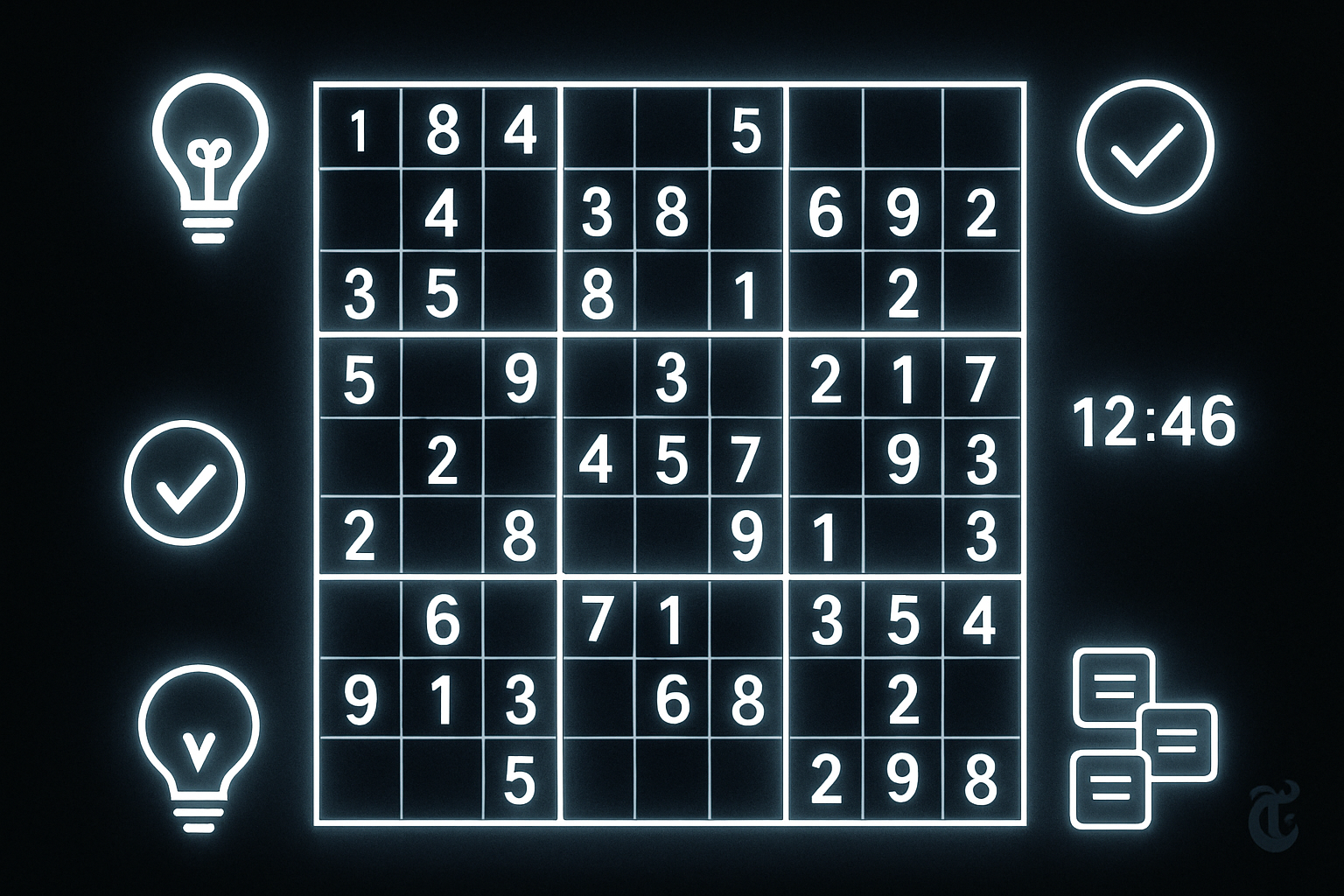
What Makes NY Times Sudoku Medium Unique?
The ny times sudoku medium puzzle stands out for its blend of accessibility and challenge. Unlike the easy level, where most numbers can be filled quickly, medium puzzles introduce trickier patterns and require sharper logic. Yet, they're not as daunting as hard puzzles, making them the perfect training ground for beginners ready to level up.
Comparison Table: NY Times Sudoku Difficulty Levels
| Feature | Easy | Medium | Hard |
|---|---|---|---|
| Average Time | 10–15 mins | 20–30 mins | 35+ mins |
| Empty Cells | Few | Moderate | Many |
| Logic Complexity | Simple | Moderate | Advanced |
| Best For | Newcomers | Beginners+ | Experienced |
A typical ny times sudoku medium puzzle uses the classic 9×9 grid, split into nine smaller 3×3 blocks. These puzzles are carefully calibrated, with just enough clues to spark strategic thinking. The NY Times uses advanced algorithms and expert curation to ensure each puzzle is solvable through logic, not luck.
You'll often spot recurring patterns in ny times sudoku medium games, such as pairs and hidden singles, but with an extra twist. Themes tend to focus on balanced distributions—rarely too sparse, never overloaded with clues. Most medium solvers spend between 20 and 30 minutes per puzzle, according to NYT leaderboard data.
Here's a quick description of what you might see: imagine a grid where each row and block has several blanks, but no area is completely empty. The challenge lies in finding the right order to fill them, using strategies beyond mere scanning.
Curious to see what these puzzles look like? You can browse sample NY Times Sudoku Medium puzzles online to get a sense of their structure and features.
For beginners, the key challenge is shifting from basic pattern recognition to multi-step logic. It's normal to hit roadblocks, but that's what makes solving ny times sudoku medium puzzles so satisfying.
Essential Rules Refresher
Before you dive into solving, it's vital to remember the core rules that govern every ny times sudoku medium puzzle. Each puzzle uses a 9×9 grid, divided into nine 3×3 blocks. Your goal? Fill every empty cell so that each row, column, and block contains the digits 1 through 9—no repeats allowed.
Every placement in a ny times sudoku medium puzzle must be based on logic. Guessing is discouraged and often leads to mistakes. Instead, use deduction and process of elimination for each move.
The NY Times digital platform offers helpful tools for solvers: you can make notes (pencil marks) in each cell, highlight possible options, and even use the error-check feature to spot accidental misplacements. These digital aids make learning and improving much smoother, especially for beginners.
Here's what a rule violation looks like: say you accidentally place two '5's in the same row. Not only does this break the puzzle's logic, but it can also make the puzzle unsolvable later on. That's why careful checking is essential, especially in ny times sudoku medium games where every move counts.
Take advantage of these built-in features, and always pause to double-check before committing your answer. Mastering these basics is the first step toward confidently solving ny times sudoku medium puzzles.
Step 1: Preparing for Your First NY Times Sudoku Medium Puzzle
Getting ready to solve your first ny times sudoku medium puzzle is all about setting yourself up for a smooth, enjoyable experience. A little preparation can make a big difference, especially for beginners eager to build confidence and momentum.
Setting Up for Success
Before diving into your first ny times sudoku medium puzzle, pick a time when you can focus without distractions. A quiet spot—maybe your favorite chair or a sunny nook—helps you stay relaxed and sharp.
Decide if you want to play digitally or on paper. The NY Times digital interface offers features like pencil marks, error checks, and a handy timer. Creating a free NY Times account lets you track your solve times and see where you rank on the leaderboard, adding a fun competitive edge.
Here’s a quick comparison of tools for print and digital play:
| Tool | Print Version | NY Times Digital Version |
|---|---|---|
| Pencil/Eraser | Yes | No (digital input instead) |
| Stylus | For tablets | For tablets |
| Notes | Manual pencil marks | Built-in note feature |
| Timer | Manual tracking | Automatic timer |
| Leaderboard | N/A | Integrated |
If you’re new to Sudoku or want a refresher on strategies, check out this Sudoku strategies and tips guide for step-by-step advice tailored to all skill levels.
Don’t forget to log in with your NY Times account before you start. This way, your progress is saved and you can keep an eye on your improvement over time.
Mindset and Approach
Solving ny times sudoku medium puzzles isn’t a race—it’s a journey. Approach each puzzle with patience and a willingness to learn. Mistakes are normal, especially when you’re starting out, and every error is a chance to understand the logic more deeply.
Set realistic expectations for your first few attempts. According to a 2024 NY Times puzzle community survey, around 60% of ny times sudoku medium solvers are beginners. You’re in good company, so there’s no need to rush.
Try to enjoy the process of working through the grid. Focus on logical thinking and celebrate small wins, like filling out a tricky row or spotting a hidden number. Over time, you’ll notice your confidence and speed gradually improve.
Remember, the goal isn’t just to finish the puzzle, but to build your skills and enjoy the satisfaction that comes with every solved cell. Each time you tackle a ny times sudoku medium puzzle, you’re laying the groundwork for even greater challenges ahead.
Step 2: Mastering Basic Sudoku Strategies for Medium Puzzles
Ready to unlock the secrets to solving a ny times sudoku medium puzzle? This section breaks down the must-know strategies every beginner needs. With clear steps, real examples, and expert tips, you'll soon feel more confident each time you open a fresh grid.
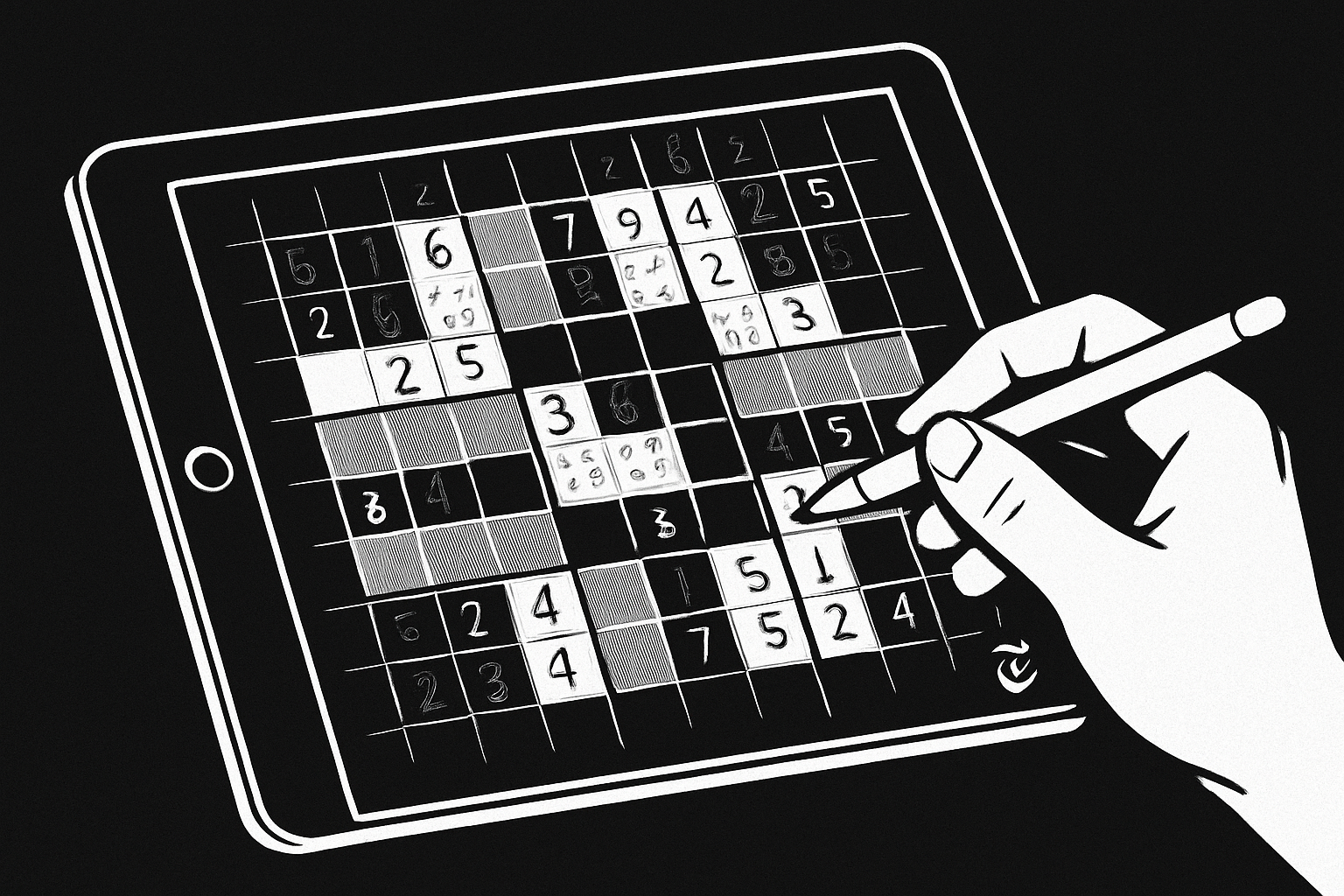
Scanning and Cross-Hatching Techniques
The first step in tackling a ny times sudoku medium puzzle is learning how to scan the grid efficiently. Scanning means looking across each row, column, and 3×3 block to quickly spot where numbers are missing. Cross-hatching takes this a step further: you mentally track which numbers are already in each row, then look at the corresponding columns and blocks to visualize where a particular digit can fit.
Try this: Pick a row with only one empty cell. Scan the column and the block containing that cell. If the missing number doesn’t appear elsewhere, you’ve found your answer! For example, if row 4 is missing a "5" and neither the column nor block has a "5," fill it in confidently.
Practicing this with real Medium difficulty Sudoku puzzles will help you internalize the cross-hatching process. Over time, your eyes will naturally scan for these opportunities, making each ny times sudoku medium puzzle feel less intimidating.
Pencil Marks and Notation
Medium puzzles often require you to keep track of multiple possibilities in each cell. That’s where pencil marks come in. On paper, jot down small numbers in empty cells to represent all the candidates that could fit. On digital platforms like the NY Times, use the built-in notation feature to add and update these marks with a tap.
For example, if a cell could be a 2, 4, or 7, you’d write 2 4 7 in small script. As you fill in more numbers, erase candidates that are no longer possible. This keeps your grid clean and your logic sharp.
Updating pencil marks regularly is crucial in ny times sudoku medium puzzles. Don’t ignore them—many mistakes happen when candidates are left outdated. By making this a habit, you’ll avoid confusion and speed up your solving process.
Naked Singles and Hidden Singles
Medium-level puzzles often hide their solutions behind singles—cells where only one number can fit. A naked single is when a cell visibly has just one candidate left (e.g., only "3" can go there). A hidden single is trickier: among all candidates in a row, column, or block, only one cell can take a certain digit, even if other candidates exist in that cell.
To spot these in a ny times sudoku medium grid, scan each house (row, column, or block) and check your pencil marks. If you find a cell with just one remaining mark, fill it in as a naked single. For hidden singles, look for a digit that only appears once as a candidate in any house.
Identifying singles is a powerful way to make progress, especially when you’re feeling stuck. Practice recognizing both naked and hidden singles—they’re the backbone of solving medium puzzles.
Avoiding Common Beginner Mistakes
Even the best strategies can be undone by common pitfalls. In ny times sudoku medium puzzles, beginners often fall into traps like guessing instead of using logic, neglecting to update pencil marks, or rushing without double-checking placements.
Here’s a quick table to summarize:
| Mistake | % of Errors (NYT, 2024) |
|---|---|
| Misplacement | 35% |
| Guessing | 25% |
| Ignoring Pencil Marks | 20% |
| Rushing | 20% |
To sidestep these errors, slow down and review your work after every few moves. Remember, guessing rarely pays off and can lead to dead ends. Instead, trust your logic and the strategies you’ve practiced on each ny times sudoku medium challenge.
Step 3: Intermediate Techniques for NY Times Sudoku Medium
Ready to boost your ny times sudoku medium skills? Once you’ve mastered the basics, intermediate strategies can help you break through stubborn puzzles and shave minutes off your solve time. These techniques unlock patterns that are common in Medium puzzles, making you faster and more accurate. Let’s dive into the next level of solving!
Pairs and Triplets (Naked/Hidden)
Intermediate solvers of ny times sudoku medium often encounter situations where a group of two or three cells in a row, column, or block contains only the same set of two or three possible numbers. These are called naked pairs/triplets or hidden pairs/triplets.
Naked Pairs/Triplets:
- If two cells in a unit (row/column/block) have only the same two candidates, those numbers must go there.
- You can then eliminate these candidates from other cells in that unit.
Hidden Pairs/Triplets:
- Sometimes two or three numbers only appear in two or three cells in a unit, even if those cells have extra candidates.
- Keep only those candidates in those cells, removing the rest.
Example grid snippet:
| 1 | 2 | | | 5 | | | | |
| | | | 2 | | 1 | | | |
| | | 5 | | | | | 2 | |
Here, if two cells in a block only allow for 2 and 5, they become a naked pair. Identifying such pairs and triplets is crucial for cracking ny times sudoku medium puzzles.
Pointing Pairs/Triplets and Box-Line Reduction
Another powerful tool for ny times sudoku medium is recognizing pointing pairs/triplets and using box-line reduction. These techniques target candidate elimination, helping you break logjams in the puzzle.
Pointing Pairs/Triplets:
- If a candidate appears only in one row or column within a block, it can be eliminated from that row or column outside the block.
Box-Line Reduction Steps:
- Scan each block for candidates confined to a single row or column.
- Eliminate that candidate from the same row/column in other blocks.
Example:
Suppose the digit 7 only appears in two cells of a block, both in the top row. You can remove 7 from other cells in that row outside the block.
Table: Intermediate Strategies and Benefits
| Technique | Benefit |
|---|---|
| Pointing Pair | Quickens elimination process |
| Box-Line Reduction | Reduces candidates globally |
| Naked/Hidden Pair | Uncovers locked numbers |
Using these methods, you’ll see patterns emerge that are common in ny times sudoku medium puzzles.
X-Wing and Simple Coloring (Intro)
For the truly stubborn ny times sudoku medium grids, X-Wing and simple coloring can be game-changers. While not needed in every puzzle, knowing these techniques gives you an edge.
X-Wing:
- Look for two rows (or columns) where a specific candidate appears in only two cells, and those cells line up perfectly across columns (or rows).
- When spotted, you can eliminate that candidate from the rest of the intersecting columns (or rows).
Simple Coloring:
- Use colors or marks to trace the implications of placing a candidate in various spots.
- If a color leads to a contradiction, that candidate can be safely eliminated.
Example of X-Wing Detection:
- Candidate 4 appears only in columns 2 and 5 on both rows 3 and 7. All other 4s in these columns can be removed.
These methods may seem advanced, but with practice, you’ll recognize when they’re needed in ny times sudoku medium.
Practice and Pattern Recognition
To master ny times sudoku medium, regular practice is essential. The more puzzles you solve, the easier it becomes to spot pairs, triplets, and advanced patterns. Consistency is key: solvers who master these techniques reduce their average solve time by 20% according to NYT analytics in 2024.
How can you practice efficiently?
- Try timing yourself on new puzzles.
- Focus on spotting one new pattern per session.
- Review your mistakes and learn from them.
Many successful solvers use multiple resources and guides, such as the NYT Sudoku – Strategy, Tips and Tricks page, to deepen their understanding and find new tactics.
Remember, every ny times sudoku medium grid you complete builds your confidence and sharpens your pattern recognition. Soon, intermediate techniques will become second nature.
Step 4: Solving a NY Times Sudoku Medium Puzzle Step-by-Step
Ready to put your skills to the test? In this section, we’ll break down the process of solving a ny times sudoku medium puzzle from the very first scan to that final, satisfying number. Whether you’re just starting out or want to sharpen your routine, following these steps will help you tackle each puzzle with confidence.
Walkthrough: Chronological Solving Process
Let’s walk through a typical ny times sudoku medium puzzle, step by step:
Step 1: Initial Scan and Obvious Placements
Begin by scanning the entire 9×9 grid. Look for rows, columns, or 3×3 blocks with only one or two empty cells. Often, you’ll spot a number that can only fit in one place. Fill in all such “gimmes” first. This kickstarts momentum and builds your confidence.
Step 2: Adding Pencil Marks
For any cell without an obvious answer, use pencil marks (or digital notes) to jot down all possible candidates. The ny times sudoku medium interface allows easy toggling between numbers and notes, making this process smooth. Update these marks as you fill in more answers.
Step 3: Identifying Singles, Pairs, and Using Elimination
Now, scan for “naked singles” (a cell with only one possible number) and “hidden singles” (a number that can only go in one spot within a row, column, or block). Mark these confidently. As you progress, watch for pairs and eliminate candidates that can’t possibly fit.
Step 4: Applying Intermediate Strategies
If you get stuck, it’s time for techniques like naked pairs, pointing pairs, or even X-Wing patterns. These strategies, covered earlier in our guide, will help break through stubborn sections of the ny times sudoku medium puzzle. Don’t be afraid to revisit earlier pencil marks—sometimes a fresh look reveals hidden solutions.
Step 5: Double-Checking for Errors
Before filling in your final numbers, review your completed rows, columns, and blocks. Make sure each digit from 1 to 9 appears only once per unit. The NY Times digital interface can highlight errors, but it’s good practice to develop your own checking habit.
Example Walkthrough Table
| Step | Action | Result/Tip |
|---|---|---|
| 1 | Scan for easy fills | Immediate progress, boosts confidence |
| 2 | Add/update pencil marks | Organizes options, prevents mistakes |
| 3 | Find singles/pairs | Reduces grid complexity |
| 4 | Use intermediate strategies | Breaks through tough spots |
| 5 | Review for errors | Ensures valid and clean solution |
Taking this methodical approach to each ny times sudoku medium puzzle builds both skill and speed over time.
Troubleshooting Stuck Points
Even with the best strategies, it’s common to hit a wall—especially with ny times sudoku medium puzzles. In fact, about 40% of beginners report getting stuck around the halfway mark. Don’t worry! Here’s how to get moving again:
- Pause and Re-Evaluate: Step away for a minute. A fresh perspective often reveals something you missed.
- Reset Pencil Marks: If the grid looks messy, erase your notes and re-enter candidates for each unsolved cell. This clears up confusion and highlights new possibilities.
- Check for Overlooked Singles: Go back over each row, column, and block. Sometimes a hidden single slips by unnoticed.
- Look for Pairs and Patterns: Revisit pairs, triplets, or unique patterns. These can open up blocked sections in a ny times sudoku medium puzzle.
If you think you’ve made a mistake, resist the urge to guess. Instead, carefully backtrack to your last confident step. Use the NY Times undo feature or, on paper, lightly erase recent changes. For a deeper dive into logical solving and safe backtracking, check out this review of Techniques for Solving Sudoku Puzzles—it explains how logic can guide you out of dead ends.
Remember, progress is rarely linear. Every time you troubleshoot and recover, you’re building essential skills for future ny times sudoku medium puzzles. Stay patient, keep practicing, and celebrate every breakthrough.
Helpful Resources for NY Times Sudoku Medium Beginners
Looking to level up your ny times sudoku medium skills? The right resources can make all the difference, especially for beginners eager to improve. From interactive tools to expert strategy guides, there’s a world of support available to help you solve with more confidence and enjoyment.
Sudoku247online.com: Free Tools, Guides & Practice Puzzles
If you’re just starting with ny times sudoku medium, Sudoku247online.com’s free online Sudoku resources are a fantastic place to practice and build your skills. The site offers a huge selection of Sudoku puzzles, including a dedicated Medium level that closely matches the challenge you’ll find on the NY Times platform.

Here’s what makes Sudoku247online.com stand out for ny times sudoku medium beginners:
- Instant Play: No registration required—jump right into solving.
- Customizable Difficulty: Try Medium puzzles to mirror the NY Times experience, or start with easier ones for warm-up.
- Printable Puzzles: Prefer paper? Download and print puzzles for offline practice.
- Beginner Guides: Access step-by-step strategy articles and tips designed for newcomers.
- User-Friendly Interface: Solving on desktop or mobile is smooth and intuitive.
Let’s say you’re working on your first ny times sudoku medium puzzle and get stuck. You can hop over to Sudoku247online.com, find a similar Medium puzzle, and apply the same strategies you’re learning. Practicing this way helps you recognize patterns and build confidence before returning to the main challenge.
Compared with the NY Times platform, Sudoku247online.com offers more flexibility: you can practice as much as you like, replay puzzles, and explore a wider range of learning materials. This makes it a perfect companion as you work toward mastering ny times sudoku medium puzzles.
Other Recommended Resources
In addition to Sudoku247online.com, several other resources can help you improve at ny times sudoku medium puzzles:
- NY Times Official Sudoku Archive: Dive into past puzzles and track your progress.
- Mobile Sudoku Apps: Practice on the go with apps that offer daily challenges and hints.
- Community Forums: Join discussions, ask questions, and share tips with fellow solvers.
- YouTube Strategy Channels: Watch walkthroughs and technique demonstrations from experienced players.
- Books and Printable Collections: Explore curated puzzle books reviewed by experts for extra practice.
Mixing these resources gives you a well-rounded approach. You’ll encounter a variety of puzzle styles and strategies, which is key for tackling ny times sudoku medium challenges. In fact, 70% of successful NY Times Medium solvers use multiple resources for practice, according to a 2024 NYT user poll.
Try keeping a list of your favorite tools and guides. Rotate between them as you practice, and you’ll notice steady improvement in your ny times sudoku medium solving speed and accuracy. The more you explore, the more strategies you’ll add to your arsenal.
Tracking Progress and Building Confidence
Tracking your progress is essential for building confidence as you tackle ny times sudoku medium puzzles. When you can see your improvement over time, each win feels more meaningful. Even small achievements—like shaving a few minutes off your solve time—can boost your motivation.
Set Personal Goals
Start by setting realistic goals for ny times sudoku medium. Maybe your first goal is simply to finish a puzzle without using any hints. As you gain experience, aim to lower your solve time or complete a streak of consecutive successful puzzles.
Monitor Your Improvement
The NY Times stats dashboard is a fantastic tool for tracking your solve times, streaks, and accuracy. Each time you complete a puzzle, your stats are updated, giving you a clear picture of your progress. Try keeping a simple Sudoku journal, too. After each puzzle, jot down which strategies you used, where you got stuck, and any mistakes you made. Reflecting on your solving approach is a proven way to improve, and you can deepen your understanding by exploring resources like A Group-theoretic Approach to Human Solving Strategies in Sudoku.
Celebrate Your Milestones
Don’t forget to celebrate! Whether you’ve finished your first ny times sudoku medium, achieved your fastest time, or maintained a weeklong streak, each milestone deserves recognition. Here’s an example of a beginner’s progress chart:
| Puzzle # | Time (min) | Streak | Notable Milestone |
|---|---|---|---|
| 1 | 45 | 1 | First completion |
| 5 | 38 | 2 | No hints used |
| 10 | 32 | 3 | Fastest solve so far |
| 20 | 28 | 4 | Four-day streak |
| 30 | 25 | 5 | 35% improvement overall |
Consistent practice is the key. According to NYT analytics, solving at least three puzzles per week leads to a 35% improvement in solve times after just one month. So keep challenging yourself with ny times sudoku medium and watch your skills grow. Every puzzle brings you closer to mastery!
Now that you’ve got a solid step-by-step plan for tackling NY Times Sudoku Medium puzzles, why not put your new skills to the test? Practice really is the key to building confidence and spotting patterns faster, and it’s even more fun when you have a variety of puzzles at your fingertips. If you’re ready to keep learning, challenge yourself, and maybe even chart your progress, you can jump right in and Play Sudoku Online! — no signup needed. Let’s keep the momentum going and turn those strategies into real wins, one puzzle at a time!

